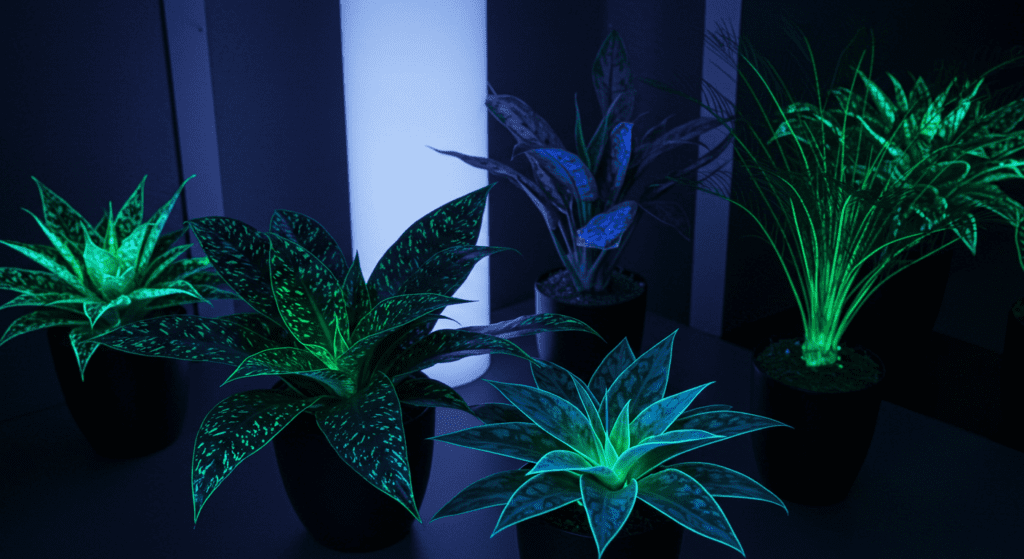Introduction
Picture this: a garden that glows softly under the moonlight, or a living room illuminated by the gentle light of bioluminescent plants. It’s not a scene from a sci-fi movie—it’s the future of sustainable decoration. Glow-in-the-dark plants are no longer a fantasy; they’re a reality, thanks to groundbreaking advancements in biotechnology.
The concept of bioluminescent plants has captured the imagination of scientists and designers alike. By 2030, the global bioluminescence market is expected to grow by 15% annually, driven by innovations in sustainable lighting and eco-friendly design[1]. But what exactly makes these plants glow, and how can they transform our homes and cities?
In this blog, we’ll explore the science behind bioluminescent plants, their potential applications, and the ethical considerations surrounding this futuristic technology. Whether you’re a sustainability enthusiast, a design lover, or just curious about the latest innovations, this article will shed light on how glow-in-the-dark plants are shaping the future.
The Science Behind Making Plants Glow
Bioluminescence—the ability of living organisms to produce light—is a natural phenomenon seen in fireflies, jellyfish, and certain fungi. Scientists have harnessed this natural process to create glow-in-the-dark plants by introducing genes responsible for bioluminescence into plant DNA[2].
One of the most notable projects in this field is the Glowing Plant Project, which used synthetic biology to insert genes from bioluminescent bacteria into plants. The result? Plants that emit a soft, green glow in the dark. Another approach involves using nanoparticles infused with luciferin, the compound that produces light in fireflies, to make plants glow without genetic modification[3].
Key Benefits of Bioluminescent Plants:
- Eco-Friendly Lighting: Reduces reliance on electricity for outdoor and indoor lighting.
- Aesthetic Appeal: Creates stunning visual effects for decoration and landscaping.
- Sustainability: Uses natural processes to produce light, minimizing environmental impact.
Applications in Home Decor, Urban Landscaping, and Sustainability
The potential applications of glow-in-the-dark plants are as diverse as they are exciting. Here’s how they’re being used today—and how they could transform our future:
- Home Decor: Imagine a living room adorned with glowing potted plants or a bedroom illuminated by a bioluminescent terrarium. These plants offer a unique, eco-friendly alternative to traditional lighting, creating a calming and magical atmosphere[4].
- Urban Landscaping: Cities around the world are exploring the use of bioluminescent plants to light up parks, pathways, and public spaces. This not only reduces energy consumption but also enhances the beauty of urban environments[5].
- Sustainability: Glow-in-the-dark plants could play a key role in reducing carbon footprints. For example, they could replace streetlights in rural areas, providing a sustainable and low-cost lighting solution[6].
Real-World Example:
In 2020, a team of researchers at MIT developed watercress plants that glow brightly enough to illuminate a workspace. This breakthrough has sparked interest in using bioluminescent plants for practical applications, such as lighting up offices or even emergency situations[7].
Ethical Considerations and Future Possibilities
While the potential of glow-in-the-dark plants is immense, there are ethical considerations to address. For instance, the long-term ecological impact of genetically modified plants is still unknown. Could they disrupt natural ecosystems or harm wildlife? These questions need careful consideration as the technology evolves[8].
Another concern is public perception. Some people may be hesitant to embrace genetically modified organisms (GMOs), even for decorative purposes. Clear communication and transparency about the science and safety of bioluminescent plants will be crucial for widespread adoption[9].
Looking ahead, the possibilities are endless. Researchers are exploring ways to make plants glow in different colors, increase the intensity of their light, and extend the duration of their glow. There’s even talk of creating bioluminescent trees that could replace streetlights entirely[10].
Summary of Key Points
- Future possibilities include multi-colored plants and bioluminescent trees.
- Glow-in-the-dark plants are created using biotechnology, such as gene editing or nanoparticle infusion.
- Applications include home decor, urban landscaping, and sustainable lighting solutions.
- Ethical considerations include ecological impact and public perception of GMOs.
Conclusion
Glow-in-the-dark plants are more than just a scientific marvel—they’re a glimpse into a future where nature and technology coexist harmoniously. From sustainable lighting to breathtaking urban landscapes, the potential applications are limitless.
As we continue to explore this exciting field, one thing is clear: the future of decoration is not just beautiful—it’s sustainable. So, the next time you see a glowing plant, take a moment to appreciate the incredible science behind it.
What’s your take on bioluminescent plants? Would you use them in your home or city? Share your thoughts in the comments below!
References:
1- Markets and Markets. (2023). Bioluminescence Market Growth Report.
2- MIT News. (2020). Engineered Plants Glow Brightly.
3- ScienceDaily. (2021). Nanoparticles Make Plants Glow.
4- Architectural Digest. (2022). Bioluminescent Plants in Home Decor.
5- Urban Green Council. (2021). Sustainable Urban Landscaping.
6- World Economic Forum. (2020). Bioluminescent Plants for Rural Lighting.
7- Nature Biotechnology. (2020). Glowing Watercress Study.
8- National Geographic. (2021). Ethics of Genetically Modified Plants.
